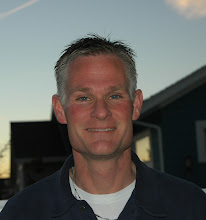The hurricane season in the north Atlantic officially runs from June to the end of November. The odd storm may blow up in May or December, but usually the most storms and the strongest ones come from mid-August to mid-October. By early November, residents of hurricane-prone areas usually can relax.
Not this year. Paloma formed as a tropical depression off Nicaragua on Wednesday morning, and reached tropical storm strength Thursday. That night it reached hurricane strength, and then turned northeast toward the Cayman Islands and Cuba. It peaked at Category 4 strength on Saturday, and weakened slightly before hitting Cuba.
Paloma is the 16th named storm of this year, and the fifth to reach at least Category 3. Hurricane Bertha churned the mid-Atlantic in July, Hurricane Gustav hit Haiti, Cuba and Louisiana in August, Hurricane Ike clobbered Cuba and Texas in September, and Hurricane Omar in October brushed the edge of Puerto Rico.
Those big winds have packed a big punch. This year's Accumulated Cyclone Index, which measures total energy carried by tropical storms, is now nearly double the total for 2007, which saw 15 tropical storms in the Atlantic, including six hurricanes and two major hurricanes, both of which reached Category 5 over the Caribbean before hitting central America. This year's total includes 8 hurricanes and five major hurricanes.
This year's 16 puts it fourth on the list since 1944, tied with 2003. Only three years had more tropical storms: 2005 with 28, 1995 with 19, and 1969, also with 19, although not all were named at the time.
Both Cuba and the US Gulf Coast hope Paloma is the season's last big wind. But it's only November 10. That worst of hurricane years, 2005, ended with Tropical Storm Zeta still blowing in the mid-Atlantic.
Jeff Hecht, New Scientist correspondent
"Just in case [we don't] we'd better have a plan," he said. Geoengineering plans mean we try and take direct control of the climate ourselves.
I first spoke to Caldeira about geoengineering a few years back when he published a modelling paper looking at the effectivness of spraying tiny sulphur particles up into the atmosphere to bounce a portion of the sun's energy back out into space.
At the time, he told me that he had been trying to come up with a way of showing such schemes were hair-brained ideas but had instead found they might work.
Don't jump to your sulphur hoses just yet - there's a major catch. If we're going to do something like that we need to know for sure that the sunshade will be maintained (it needs to be routinely "topped up") pretty much forever. Fail to top it up and we'll be hit by a double whammy of warming as the solar energy we've been avoiding streams down and gets trapped by the greenhouse gasses we've kept emitting.
Ocean fertilisation is another idea that has had a lot of press. There again, there are people on both sides of the fence. Most think that without any idea of the long-term consequences of dumping fine iron particles into the ocean, doing this would be nuts.
But some think that it at least needs to be considered. Earlier this year, the UN Convention on Biological Diversity backed a ban on all large-scale fertilisation operations.
That's why Caldeira was brought in to talk to the British government. He doesn't advocate putting a sunshade up tomorrow but does think that all options need to be researched before it's too late. A fair point. Others worry that geoengineering will be seen as a "get out of jail free" card with the added benefit of meaning we can keep burning fossil fuels.
Catherine Brahic, environment reporter
Categories: Environment
Tags: climate change | geoengineering




1 comment:
If chemtrails are spewing toxins to reduce the population then how is it that the population is still gorwing?
And if they are spewign mind control chemicals then how are you able to continue to question them?
Post a Comment